Heydeckers in America
Joachim Heydecker VI

JOACHIM HEYDECKER was born on April 13, 1798 in Kempten, Germany. He was the first Heydecker in the direct line to arrive in the Americas. He spent his first years in New Orleans, then came to New York around 1832.
During his childhood and as a youth, he was subjected to French influences and ideas, which were then prevalent in Bavaria owing to the fact that Napoleon had raised the elector to the rank of King and made him an ally. (In 1806, Maximilian I. Joseph became King of Bavaria and joined the Napoleonic Confederation of the Rhine.) The Bavarians did in fact remain faithful allies of Napoleon until his overthrow at Waterloo.
As soon as Joachim was master of his own actions, at the age of 21, in 1819, he left Bavaria and moved to Le Havre, France, where he entered the mercantile house trading with America. There he met Adolphe Le Moyne, five years his junior, also a clerk in a similar mercantile house nearby on the same street. He was with the house of Bonaffe & Company, commission merchants and bankers of Paris and Le Havre. Their principal business in America was cotton and Joachim emigrated to America as their representative.
His first years in America were in the South in New Orleans, buying cotton. There are rumours that these arriving French ships made a detour to West Africa on their way to Louisiana, bringing slaves, selling them, and using the proceeds for buying cotton, then shipping that cotton to England factories. But about 1830 or 1832, he came to New York to take charge of their office there. Here he met Elizabeth Caroline Creagh (born May 9, 1802; d. April 8, 1841). She had recently been divorced from Dr. George Chapman. Dr. Chapman was a brilliant physician, but a man of intemperate and immoral life. He married Elizabeth on November 18, 1834. The wedding was conducted by Reverend Joseph Holdich, a Methodist minister.
After their marriage, they lived at 122 Greene Street, New York City. They moved to 43 Mercer Street in 1836, and later relocated to 6 Wooster Street. The Creaghs were all Methodists and Joachim Heydecker was prominent among them, being Treasurer of the Pacific Street Church in Brooklyn for many years.
Elizabeth Caroline Creagh was born in Cork, Ireland on 9 May 1802 to William Henry (Every) Creagh and Fidelia Marie Hawkins. Edward Le Moyne Heydecker writes that she was:
a very charming and attractive woman, bright and tactful in manner, handsome in appearance, well-read and musical. She was deeply loved by her relatives and friends.”
From her first marriage to the doctor George Chapman she brought two sons, George (born June 5, 1829 in New York – April 7, 1906 in New York), and William Henry (May 15, 1832 in New York – June 15, 1873 in Paris). Both called themselves not Chapman, but Heydecker. Edward Le Moyne Heydecker describes Joachim Heydecker’s relationship to these two sons as:
He brought up George and William Henry Chapman, the children of his wife’s first marriage as his own sons, gave them his name (though never by legal adoption, as far as I can learn) and they never knew from his lips that they are not his own sons. He was very angry when they learned it from gossiping neighbors.”
Soon after his marriage, he convinced his brother Christian to come to New York and in 1840 brought about a partnership between Christian and his brother-in-law, William Henry Creagh as Creagh & Heydecker. Joachim continued to be the American representative of Bonaffe & Co. His eldest son was named Edward Bonaffe after the head of the house. They were commission merchants and bankers with an office at 4 Hanover Street, and had a large and prosperous business. He held their power of attorney and acted for them in America. About 1848, the house failed disastrously. Their insolvency was withheld from Joachim and he knew nothing until the crash came. Rumors of difficulty were about, but on the assurance of the principals that all was well, he convinced several persons to accept their paper just before the failure. No one ever questioned his integrity or thought to hold him responsible, but he made himself responsible to all those who acted on his assurance that all was well. After the failure of Bonaffe & Co., Joachim joined Creagh & Heydecker, which later, upon the retirement of William Henry Creagh, became J. & C. Heydecker, and so continued until Joachim’s death. He used all of his personal means in paying all the debts of Bonaffe & Co. and in the same way, employed all of his earnings after the failure until he had discharged in full all of the debts, which he had thus assured. When he died, he left only $15,000 which was still a considerable sum for the time.
An entry in Joachim’s handwriting gives the following:
Elise Caroline, my beloved wife, took sick on the 4th of March and was delivered on the 5th between 4 and 5 o’clock of two boys. She continued ill until Saturday, the 3rd of April, when at about half past 10 a.m., she was struck on the left side by paralysis. She continued in that state until the 7th of April at twenty minutes before 5 o’clock when her spirit left her mortal frame. She was buried on the 8th of April at 5 o’clock p.m. in our family vault no. 56 in the burying ground of the Methodist Episcopal Church on 18th Street, where her two babies were deposited by her side.”
After her death in 1841, Joachim moved to Brooklyn and resided there until his death on December 3, 1858 at the age of 60. The record gives the cause of death as dropsy (Edema: build-up of fluid in the body’s tissues). Christian Heydecker stated that it was a heavy cold, neglected too long. He had been ill for about a month. He bought a plot at Greenwood Cemetery, Brooklyn, NY, and moved his wife’s body there and is buried beside her.
He was described as a man of reserved character and rather stern expression, with a piercing black eye; with few intimates but warm in his friendship toward the few who possessed it; an able business man. just and honest to the extreme in his dealings with all men.
A passport issued in 1848 describes him as 46 (error) years of age, five feet six inches tall, medium forehead, dark brown eyes, aquiline nose, medium chin, black hair, dark complexion, face rather long. He spoke French, German and possibly Italian, and used French by preference, but had a perfect command and fluency in English.
Children:
- Edward Bonnaffe Heydecker, b. December 14, 1835; d. July 26, 1876
- Elise Caroline Heydecker, b. 1869; d. 1862
- Joachim Charles Heydecker, b. 1837; d. 1838
- Joachim Heydecker, b. March 5, 1841; d. March 13, 1841
- Baby Boy Heydecker, b. March 5, 1841; d. March 6, 1841
Edward Bonnaffe Heydecker
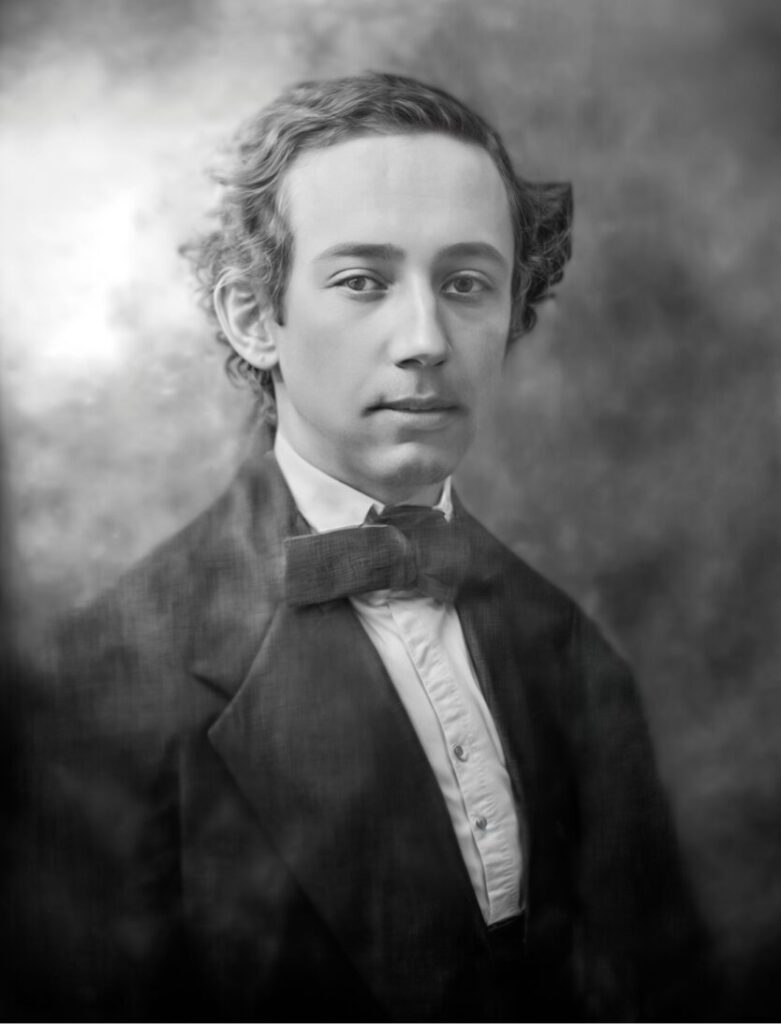
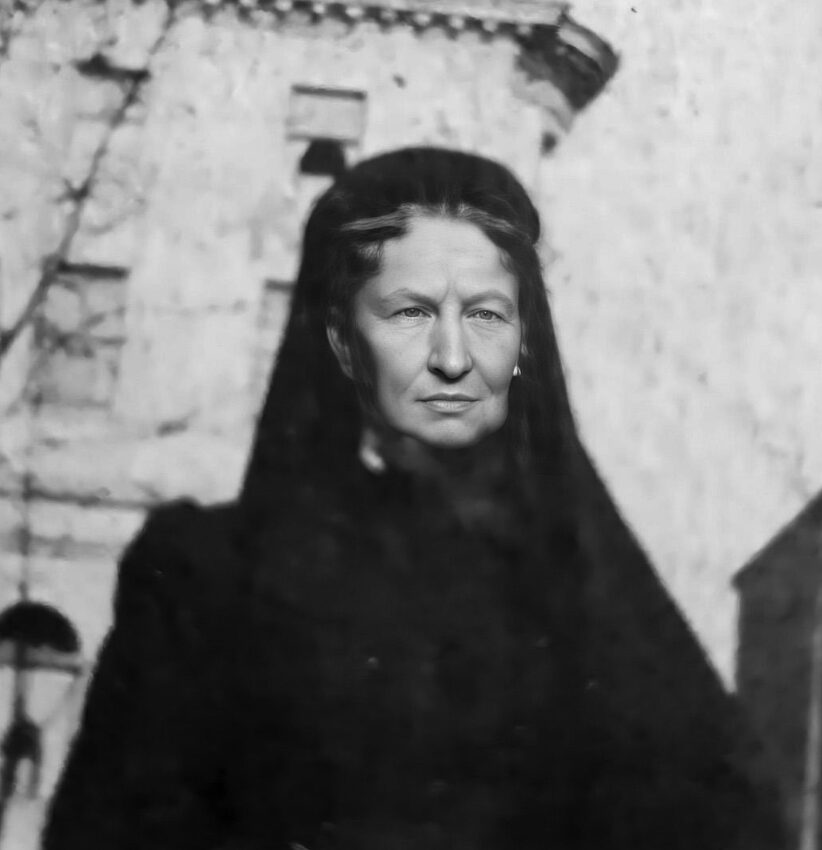
EDWARD BONNAFFE HEYDECKER, son of Joachim Heydecker, was born on December 14, 1835 at 122 Green Street, New York City. His mother died when he was six years old and soon after, the family moved to Court Street, Brooklyn. The Le Moynes lived on the same block and it is said that Edward played with Henrietta Josephine Le Moyne (b. June 4, 1841 at Court Street, Brooklyn; d. October 18, 1923, Philadelphia), the daughter of Adolph Le Moyne, and trundled her in her baby carriage in the street. In 1848, when the house of Bonaffe & Co. failed, it caused a great change in his father’s fortunes. That same year, he began to work, entering the service of W. J. Schiefflin & Co., wholesale drug merchants on William Street, New York.
His father died when he was 23 years old and he then took his father’s place in the firm of J. & C. Heydecker with his uncle, Christian. There he claimed his father’s share of the business and upon a bitter disagreement with his uncle on this, he broke ties and started his own commission house, with offices in Exchange Place. He represented several foreign houses and before the Atlantic Cable was established in 1866, he had a very profitable business. In the era of speculation during the Civil War and following it, he made significant money. In 1867, he became involved and received some assistance from his brother, William H. Heydecker and Adolphe Le Moyne. At one time, his business was mostly cotton; later, it included Western food products and the sale of foreign cargoes consigned to him.
On February 20, 1862, He married Henrietta J. Le Moyne at her father’s residence in Philadelphia, PA, USA. The Rector of St. Bartholemew’s Church, Reverend Samuel Cooke, conducted the service. He was 5’10” in height, slim, with black hair and piercing blue eyes.
After an attack of pleurisy, his health began to fail and for the last three years of his life, he was a sick man, fighting against consumption (tuberculosis) and meeting terrible financial difficulties which followed the Panic of 1873. Edward passed away on July 26, 1876 and was buried in Greenwood Cemetery in Brooklyn, N. Y. at the age of 40.
Children:
- Edward LeMoyne Heydecker, b. June 12, 1863
- William Creagh Heydecker, b. September 6, 1865; d. 1942
- Elise Caroline Heydecker, b. June 19, 1869; d. February 7, 1907
Edward Le Moyne Heydecker
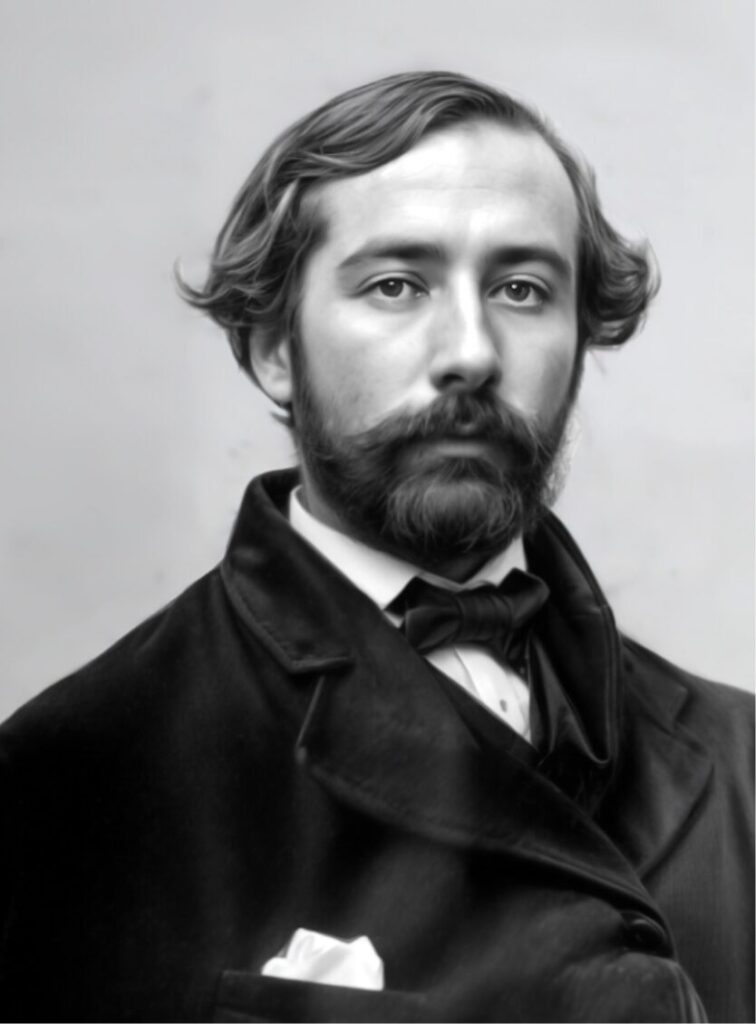
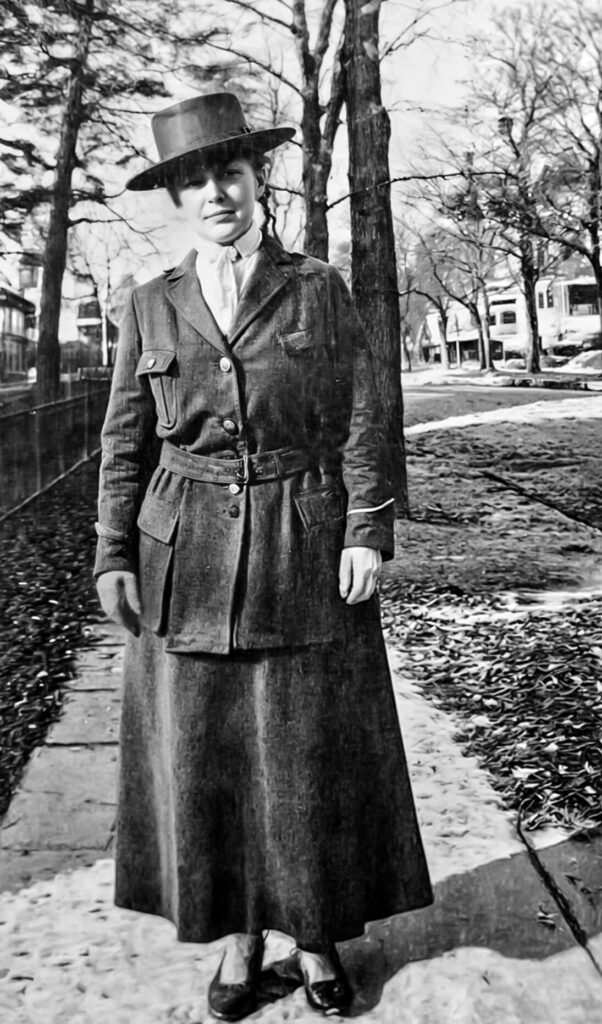
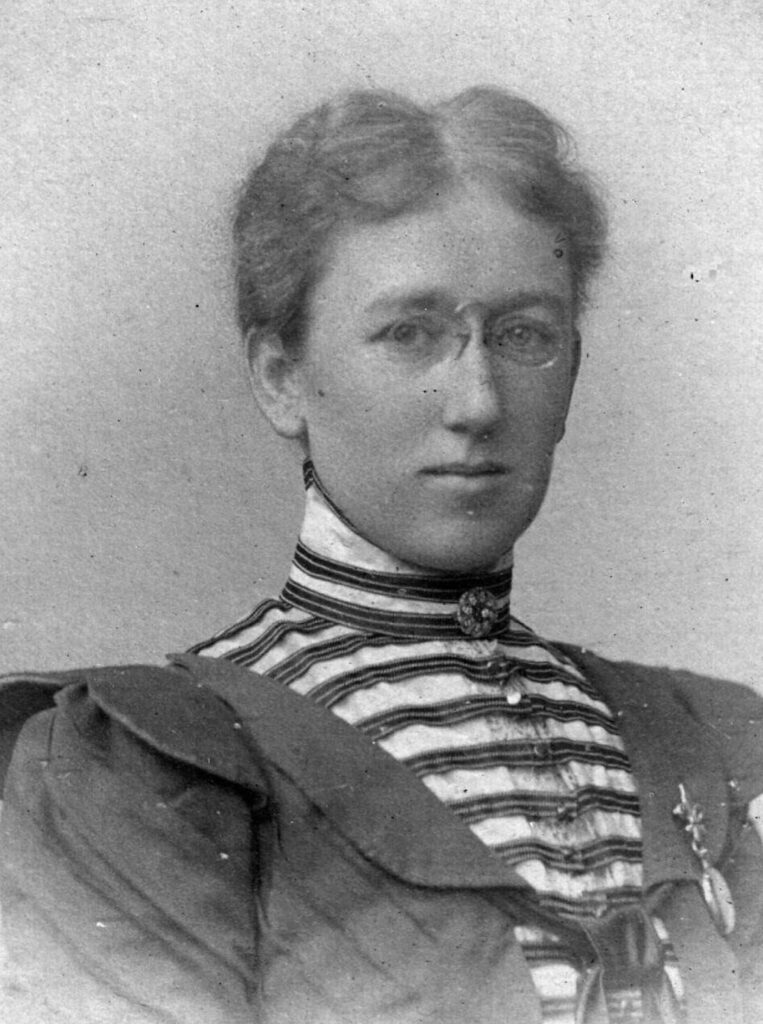
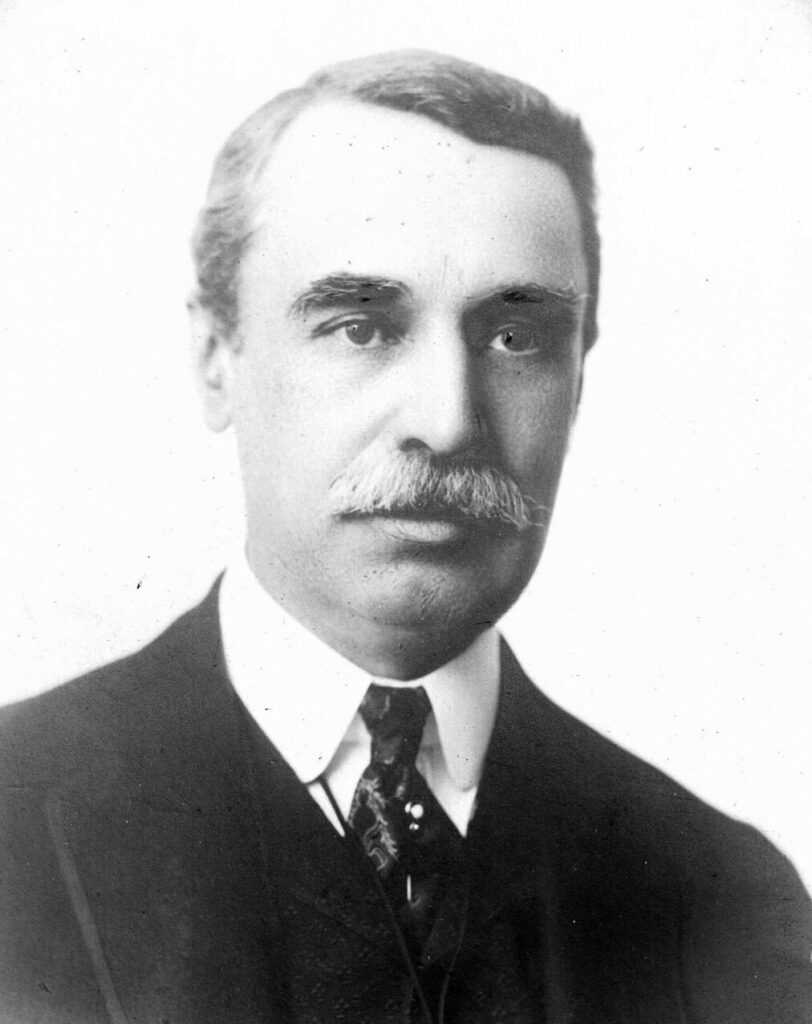
EDWARD LEMOYNE HEYDECKER, son of Edward Bonaffe Heydecker, was born on June 12, 1863, at 90 West 11th Street (renamed 34 West 11th Street), New York City, N. Y.
Edward attended MW Lyon School for years 8 to 12, then went to Columbia Grammar School and graduated in 1879 as head of the school. He entered Columbia College and graduated in June, 1883. He followed this accomplishment up by entering Law School and the School of Political Science in 1883, achieving his LLB cum laude in 1885. He joined the Coudert Brothers law practice until November 1887, when he began an independent practice.
He married Catharine Paxson Darlington (b. August 4, 1860; d. January 1, 1956) on April 25, 1889 in West Chester, Pennsylvania. Catharine was a member of the Daughters of the American Revolution. She also belonged to the Westchester Women’s Club and the National League for Women’s Service during World War I. She was a former deaconess of the Community Church in Mount Vernon, NY. Catharine’s grandfather was Joseph Jackson Lewis, mentor of Abraham Lincoln, and one of the originators of the Republican Party. It is rumoured that he told Mrs. Lincoln that he would be unable to attend the theatre due to having too much work on the fateful night of the assassination. In one of his letters to Catharine’s mother, he said that Mr. Lincoln was “very pale and lacked stamina”.
He left New York for Philadelphia in November, 1891, and remained there until March of 1895. He joined the offices of Reed & Pettit and was also the Trust Officer of Citizens Trust Insurance Company. He resumed his practice in New York City in 1895 for the Department of Taxes.
Law Notes, September, 1898 mentioned:
The War Revenue Law of 1898, annotated by Edward L. Heydecker and Fulton McMahon, is an attractive volume of 167 pages. The compilers of this timely work have compressed a great deal of useful information. The introductory chapter gives a short history of stamp duties, and at the close of the volume is a statement of the bibliography of the subject. The work can be commended as a very handy manual.”
Edward also compiled Statutes of New York. He became Assistant Member of the Mount Vernon Board of Education from August 1904 to July 1907. He later became a Member of the Advisory Committee on Taxation and Finance for New York City from 1907 to 1908.
Edward provided an important service to the City of New York, as well as the country. For many years as an active member of the Tax Reform Association, and for six years in his capacity as assistant to the President of the New York City Tax Board, Mr. Heydecker devoted himself to the betterment of tax laws.
From Maine to California, he was recognized by those interested in the subject, as a leading expert on constructive tax legislation, and his advice was constantly sought by various associations ans State Legislative Committees dealing with this important work. Deeply imbued with public spirit, he was always ready to volunteer his services for the cause of good government.
Even while suffering intensely from his illness, which he had little hope of surviving, his sole expressed wish was that he might live long enough to complete the task he was engaged on. He showed great courage and true devotion to duty.
He died on February 10, 1914 in Mt. Vernon, NY and is buried at Greenwood Cemetery in Brooklyn. He was 41. Catharine lived a long life, passing away on January 1, 1956 at the age of 95.
Scandal and Vindication
At one point in 1899, Colonel Gardiner charged Mr. Edward Le Moyne Heydecker and an associate (and co-author), Fulton McMahon, of fraud, collusion, and misappropriating funds from the City Club of New York, of which he was a member of the Council. The Assistant District Attorney Le Barbier charged him with grand larceny, but Magistrate Mayo refused, stating in his decision, “No evidence having been presented in this inquiry that would justify the issuing of a warrant against the above named defendants; the application is denied.”
The charges which were preferred against E. L. Heydecker and Fulton McMahon by Ignatius Weltner, a lawyer, were formally retracted at a continuance hearing before Magistrate Mayo in the Jefferson Market Police Court. Mr. E. A. Alexander, counsel for Mr. Weltner, was placed on the witness stand at his own request, and after setting forth the grounds of his earlier suspicions, declared that all the circumstances had been clearly explained to him, and that in the light of these explanations the charges were groundless.
The sudden turn of affairs left the burden of the prosecution, which was of a criminal nature, solely upon the District Attorney’s office. The A.D.A. was unwilling to withdraw the charges without first consulting with his chief. He announced that the prosecution had concluded its examination of witnesses, and asked Magistrate Mayo for an adjournment until the records of the case could be reviewed.
“The only summing up,” interjected Simon Sterne, counsel for the defendants, “should be an elaborate apology to the gentlemen who have been wronged by these charges. Nothing else is possible in view of the evidence.”
Mr. Heydecker and the other defendant, however, objected to a withdrawal of the charges against them, and insisted that the case be pushed until dismissed by the court. The charges against the defendant grew out of a series of litigations incidental to the settlement of the estate of George Orgawitz, an Austrian who died in America. The defendants in this case represented the American heirs, and Ignatius Weltner, who preferred these charges, represented the foreign heirs. The records of the litigations involved were very extensive and the examination of these and of the witnesses proceeded for several weeks.
Considerable comment was caused when the prosecution began from the fact that both Mr. Heydecker and Mr. McMahon, who were members of the City Club, had been active in certain work connected with the Club’s charges against District Attorney Gardiner that had been pending before a Commissioner appointed by Governor Roosevelt. The City Club retained Simon Sterne and other counsel to defend the accused attorney and sent delegations to the police court as a manifestation of its interest in the case. In withdrawing his client’s charges, Mr. Alexander insisted that at no time had he desired to persecute the defendants, but acted in good faith throughout.
“If the charges are pressed by the District Attorney’s office in the view of Mr. Alexander’s statements,” said Mr. Sterne, “the animus must be evident. I do not believe that there will be a further hearing. Assistant District Attorney Le Barbier is too good a lawyer and too much of a gentleman, to push the prosecution further.”
Mr. Heydecker said, after receiving notice of the dismissal of the charges, he felt that he owed it to himself to bring suits of libel against several newspapers which had printed slanderous versions of the case. Members of the City Club who talked about the case later that night were pleased with the result and expressed hope that Mr. Heydecker would sue which had, as he said, slandered him. Mr. Heydecker felt that while this slander had indeed caused him damage to his reputation, all that knew him and the society in which he lived and worked, would not affect his livelihood and standing in the community.
On April 4, 1900, the City Club of New York held its annual meeting and the minutes from the council refers at some length to the charges brought by the Club against District Attorney Gardiner and the retaliation visited upon Mr. Heydecker and Mr. McMahon, both upstanding members. In closing this feature, it states:
“It can hardly be doubted that at the conclusion of the pending investigation, the Governor will be constrained to agree with the press and the intelligent public of the City of New York that the continuance in office of the present District Attorney is a menace to the public welfare and a protection to the enemies of public order and decency. It has frequently been stated, and justly, that the city of New York needs less legislation and better administration. In seeking the removal of the district attorney, the City Club has kept this principle clearly in mind. It is attempting to secure the removal of an unfit occupant of an office which, if honestly, faithfully, and ably administered, can contribute more than any other to the order, security, and good name of the city.”
Children:
- Baby Boy Heydecker, b. March 2, 1890 at 208 W. 69th Street, NYC; d. March 2, 1890
- Wayne Darlington Heydecker, b. March 28, 1891
- Edward Creagh Heydecker, b. August 6, 1893 in West Chester, PA; d. August 20, 1893
- Creagh Mitchell Heydecker, b. August 1, 1896; d. February 11, 1972
Wayne Darlington Heydecker
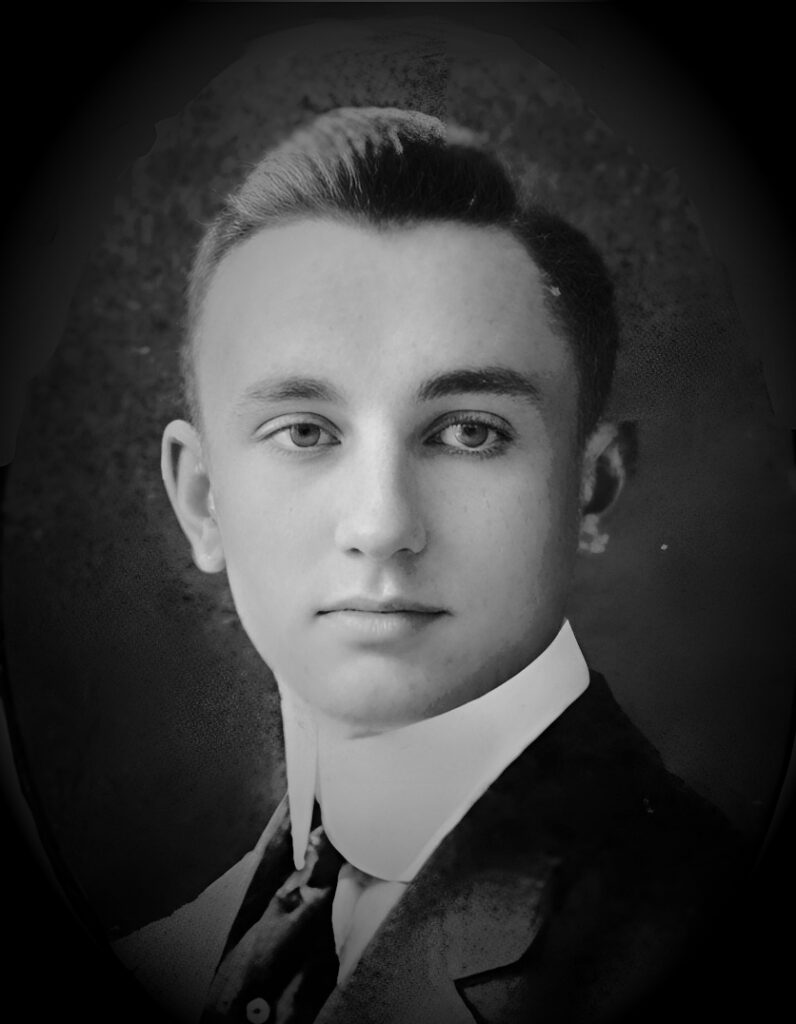
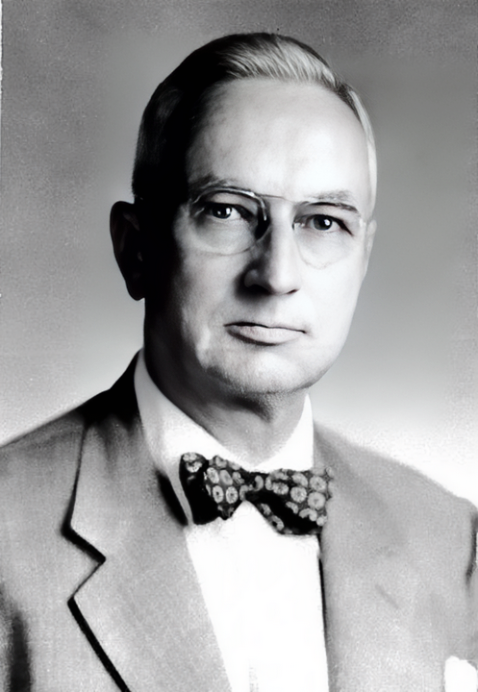
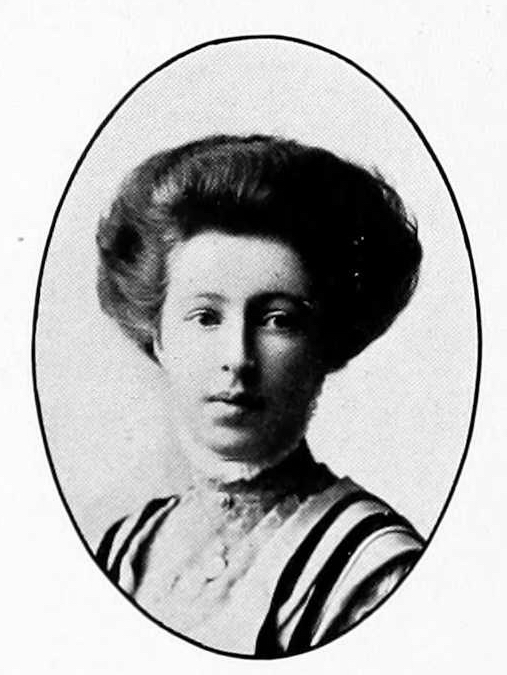
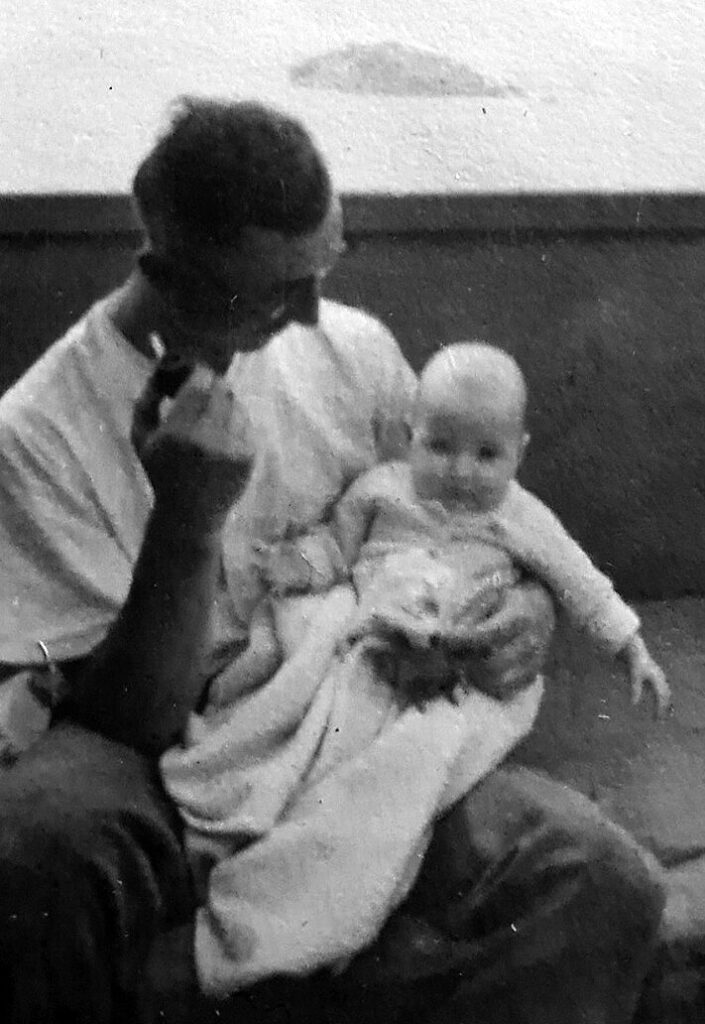
WAYNE DARLINGTON HEYDECKER was born on March 28, 1891 at 208 W. 69th Street in New York City. His father was a member of the Board of Education in the city of Mount Vernon, New York, to which the family moved in 1901.
Wayne Heydecker followed in his father’s pattern of Public Service after receiving his B.A. from Columbia University in 1911, where he had majored in government political science and economics. He took a year in law school but had to discontinue the study of law by reason of an eye injury in 1912. He began civic work as a member of the staff of a citizens committee investigating the police department after the notorious Rosenthal murder in New York City. For several years thereafter, he served the City Club of New York, a political non-partisan organization, as Assistant Secretary, Committee Secretary and also as a registered agent of the club at the State Legislature in Albany.
He married Ethel May Cochrane (b. 1890; d. 1975) in 1914. Ethel Heydecker was a patroness of the Metropolitan Opera Association, donating extensive time and money to earn scholarship funding for the Winbrook School of White Plains, New York. Mrs. Heydecker was also a patroness of the Westchester County Recreation Commission which oversaw the construction of the Westchester County Centre dedicated to music and performing arts. She was also in charge of the Westchester Women’s Club of Mount Vernon at one point.
He was also a well-known lawyer, tax expert and Assistant Tax Commissioner of the city of New York until his death. He was Secretary of the committee that drafted and secured the passage of the first Municipal Planning Act in 1913 for the municipalities of New York. In 1915 he joined the staff of the American City Bureau which was engaged in building up strong civic organizations such as Chambers of Commerce, etc. He was called back by the American City Bureau as its Director of Research and by the American City Magazine as Associate Editor in 1918 to 1922. In the meantime he had served as Chairman of the City Planning Board of his home city, Mount Vernon, New York, organized the Westchester organization, and later of the Fairfield County Planning Federation in Connecticut from 1922 to 1928. He was Housing Consultant and Field Secretary of the committee in the regional plan of New York and its environs. He surveyed 528 municipalities in the New York Region, made at least a thousand talks, many of them illustrated by slides on the proposals of the regional plan. He was also co-author of a monograph on ‘Sunlight and Daylight for Urban Areas” and collaborated with his co-author Ernest P Goodrich in Planning and Zoning studies for various municipalities during these years he taught in the summer school of the American City bureau and the spring sessions of The Institute of public administration that was affiliated with Columbia University.
In 1928, he helped to incorporate the Regional Plan Association of New York and became its Secretary and Associate Director for 3 years. The association is still functioning and growing in influence. In 1930, he was drafted to serve as Director and Planning Consultant of the Westchester County New York Emergency Work Bureau, a post he held until mid-1936. During this, he planned and supervised 22 million man hours of useful work for the County of Westchester and its numerous villages and towns, and at times had as many as 9,000 persons on the Work Bureau payroll.
In 1936, he was appointed by Governor Herbert Lehman of New York to be Director of State Planning. In the next three years, he also served as one of New York State’s Commissioners in the Interstate Commission on the Delaware River Basin by appointment by a joint legislature committee, and by appointment of Governor Lehman, also served as one of New York State’s Commissioners on an interstate Commission on the Ohio River Basin. In 1939, he was chosen to be the Eastern representative of the Council of State Governments to maintain harmony and develop programs for legislation by the state legislatures of Maine, New Hampshire, Vermont, Massachusetts, Rhode Island, Connecticut, New York, New Jersey, Pennsylvania, Delaware, and Virginia to the south. In so doing, he served as Secretary of the Eastern States Conservation Conferences of 1940, 1941, and 1942. As an outgrowth of this work, he was successful in securing identical legislation in the 15 states remaining to Florida, creating the Atlantic States Marine Fisheries Commission for which he served as Executive Secretary Treasurer from 1942 to 1962.
During those twenty years, he also served as Planning and Zoning Consultant for about 20 municipalities in New York, Connecticut, and New Jersey, and gave lectures on planning subjects on the conservation of the marine fisheries at a dozen or more colleges and universities including a full semester course in the extension classes of Columbia University for members of municipal Planning Boards and Zoning Boards of Appeals for 14 years. He also taught in The Institute of Public Administration.
While serving as Director of Planning for the State of New York, he brought about the creation of the New York State Federation of Official Planning Boards, and in cooperation with the Conference of Mayors and the Association of Towns, established their annual schools for municipal planning and zoning officials and was Director of the school for the past two years.
During his 20 years as Executive of the Atlantic States Marine Fisheries Commission, Mr. Heydecker helped to bring about the development of a similar commission for the Gulf Coast states and cooperated closely with that commission and that of the Pacific states. He also served as member of an advising committee on marine fisheries to the U.S. Department of State and served as one of the United States Representatives at two International Fisheries conferences: one in Washington in 1949, the other in Ottawa in 1961. The Washington conference resulted in a treaty adopted by 11 Nations governing fishery in the Northwestern Atlantic Ocean.
Mr. Heydecker served as Chairman of the Scientific Committee of the Atlantic States Marine Fisheries Commission. As such he was instrumental in securing the establishment of a marine fisheries laboratory in the state of Delaware and in coordinating the resources of marine fisheries laboratories along the Atlantic coast to collect data for a complete bibliography on the flora and marine species that inhabit the estuaries of the Atlantic coast. This bibliography was subsequently published by the U.S. Fish and Wildlife Service.
Having seen men retire with a want for a compelling interest, Mr. Heydecker began to study oil painting seriously in 1946 so as to have a demanding application when he retired in 1958. He retired from his professional work as an expert in the field of Municipal Planning and Zoning after 45 years in that field. In 1962, he resigned from his post as Executive in the Atlantic States Marine Fisheries Commission, completing a span of 50 years in the field of Civics and Governmental Administration which, interestingly enough, did not include a single day of unemployment.
Now after 20 years of serious work in the painting of landscapes and seascapes, he was member and formerly a Director of the Hudson Valley Art Association and a member of the American Artist Professional League. He has pictures hanging in 20 states of the United States and one province of Canada and was frequently invited to serve as a judge in local art shows. He died in 1971.
Children:
- Margaret Heydecker, b. (??); d. Jan. 4, 1998
Creagh Mitchell Heydecker
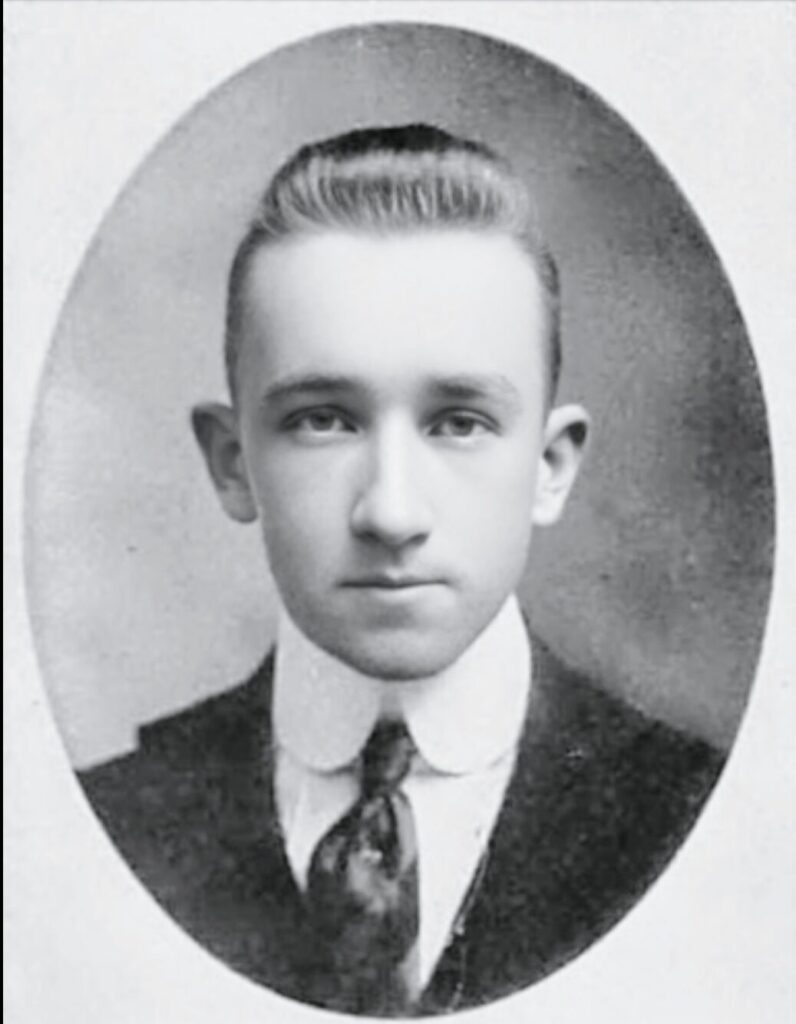
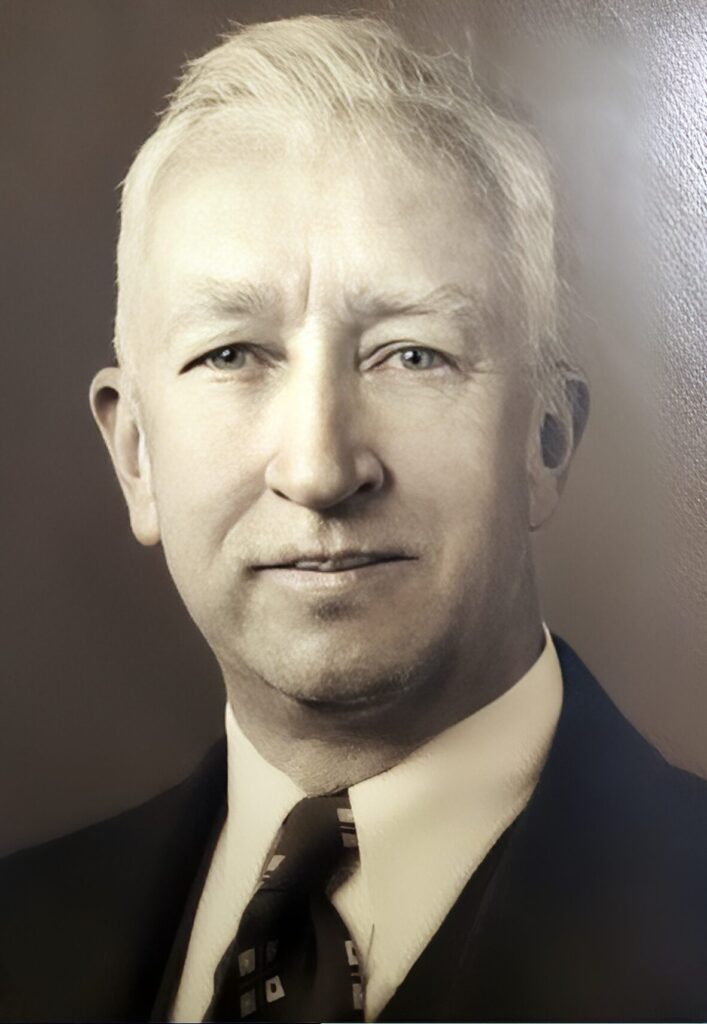
CREAGH MITCHELL HEYDECKER was born on August 1, 1896 at Mt. Washington, Berkshire County, MA. He married Marie Marguerite O’Brien (b. April 1, 1890 in Peekskill, NY). They had no children.
Creagh graduated from Columbia University in 1917 with an A.B. In August 1917, he enlisted in the aviation section of the Signal Corps Reserve for Flight Training. Sailed for France in October of 1917. No flying training. After long delays, he was commissioned as first lieutenant pilot in the US Army Air Service. At the time of the November 8th 1918 Armistice, he was with the 24th Aero Squadron near Verdun. He returned home and was discharged at request in June 1919.
After several years trying to find himself in the business world, he joined the Metropolitan Life Insurance Company in 1923 in their Group Insurance Division. He served in various capacities in that division in New York, Chicago, and Atlanta, then back in New York until retirement in November of 1961. He was a member of the Sons of the American Revolution, and the New York Yacht Club.
In a brief letter from Margaret (Peggy) Heydecker in 1972:
It is with regret that I write to tell you that Creagh Heydecker died yesterday, February 11, 1977 in New York City after a brief illness. When he didn’t answer his phone Monday evening and Tuesday morning, we broke into his New York City apartment with the aid of the security police of the lovely apartment complex where he lived and found him unconscious. We took him immediately to the hospital. He recognized my voice, then squeezed my hand but didn’t speak and later lapsed back into unconsciousness. Disease was diagnosed as meningitis; high fever grew progressively worse and three days later, he was gone. This follows the springtime death of my father Wayne, leaving only Dick Heydecker of Foxborough, MA and his two boys to carry on the name.”
Creagh died in New York City from a form of encephalitis on February 11, 1972, aged 75. He is buried in Oaklands Cemetery, West Chester, Chester County, Pennsylvania, USA. Mrs. Heydecker passed away on October 29,1966 and is buried at the Assumption Cemetery in Peekskill, NY, USA.
Margaret (nee Heydecker) Foreman

MARGARET (HEYDECKER) FOREMAN, an avid traveler and proponent of international student exchange programs, died Sunday afternoon (Jan. 4, 1998) at her home in North Granby, CT, after a long illness. She was 79. In September, she was awarded an honorary doctor of humane letters degree from Hartwick College in Oneonta, N.Y., which cited “her efforts in beautifying the campus and encouraging the study of diverse cultures.” The college, where Mrs. Foreman had been an honorary trustee since 1996, also acknowledged that she had “played a key role in the development of several international programs.” With her late husband, Charles W. L. Foreman, a longtime trustee, she helped the college start the Foreman Institute of Creative Arts.
Mrs. Foreman was born in Mt. Vernon, NY, the daughter of Wayne Darlington Heydecker and Ethel Cochrane Heydecker. She attended public schools, graduating from Mount Vernon High School, where she played French horn and drums in music groups. As a teenager, she also loved riding horses and sailing with her father on Long Island Sound. She attended the College of William and Mary in Williamsburg, VA, where she majored in history and was on the dean’s list. After her marriage in 1942, she and her husband lived in Mount Vernon and later, Pelham Manor, NY, where they raised their two children. Mrs. Foreman was active in the American Field Service, an international student exchange program; in Kappa Kappa Gamma, her college sorority; in the Girl Scouts, as a troop leader for many years and as stage manager for numerous theatrical productions. She also was a lifelong gardener and an enthusiastic amateur astronomer.
In their later years, she and her husband lived in North Granby and were members of the Simsbury CT United Methodist Church.
Children:
- Judith Foreman, b. 1944
- William H. Foreman (Ludlow, VT) 1947- married Ann Mead 1949-
Grandchildren:
- John Mead Foreman 1977-
- Alexis Heydecker Foreman 1982-
CHARLES W. L. FOREMAN, retired senior vice president and corporate director of United Parcel Service, died at John Dempsey Hospital in Farmington. He was 83 and lived in North Granby.
A former English professor, Mr. Foreman joined UPS in 1941. He had served in nearly every area of the company by the time he retired in 1981. He was elected to the board of directors in 1969 and became senior vice president in 1973.
A supporter of private colleges and universities, Mr. Foreman was the first administrator of the UPS Foundation. Under his leadership, endowments at major research universities in the United States and Canada were established for teaching and research chairs in the fields of logistics, distribution and transportation.
Starting in 1980, he served four terms as chairman of the board of trustees of the Independent College Funds of America, now the Foundation for Higher Education.
Born and raised in Pennsylvania, Mr. Foreman graduated from the University of Pittsburgh in 1935 with a degree in English, speech and psychology. Before joining UPS, he earned a master’s degree in English and went to work as an English professor and head of dramatics and speech at the University of Pittsburgh. He also worked for a college textbook publishing company in New York. He spent four years as a captain in the Army during World War II.
He was active for many years with Hartwick College in Oneonta, N.Y., serving as a trustee and chairman of the strategic planning and finance committee. He is credited with the revision and modernization of the college’s liberal arts curriculum and was given an honorary doctor of humane letters degree from Hartwick in 1989.
Judith Foreman
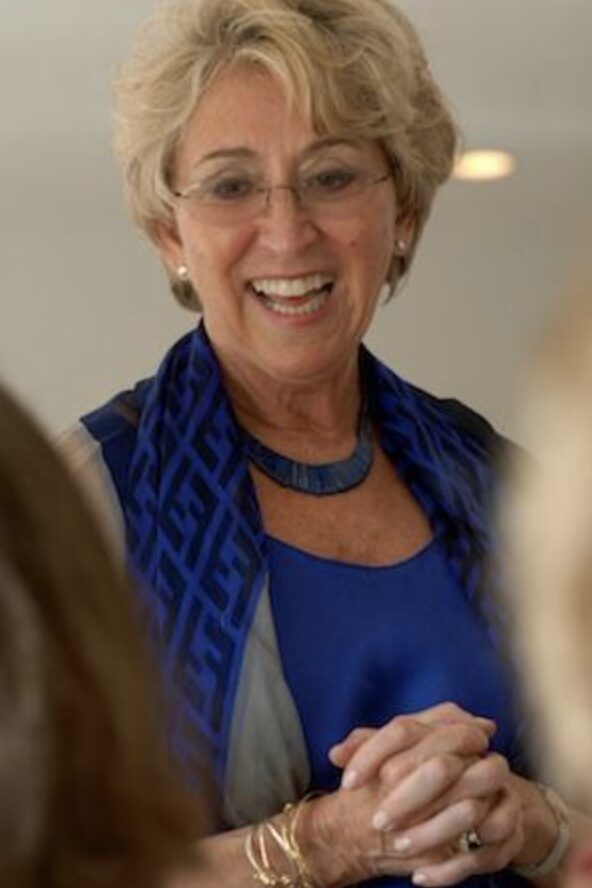
JUDITH FOREMAN was born in 1944. On June 18, 1966, she married Bruce Fowler (b. 1944) of Toledo, Ohio. The couple entered Peace Corp training and went to Brazil, serving for three years, living in Campinas. They worked two hours away from Sao Paulo, building houses for people who lived in the “favelas” in tin shacks on top of a garbage dump.
Judy Foreman is the author of “A Nation in Pain” (2014), “The Global Pain Crisis” (2017), and “Exercise is Medicine,” (2020), all published by Oxford University Press, and was a staff writer at The Boston Globe for 22 years and the health columnist for many of these years. Her column was syndicated in national and international outlets including the Los Angeles Times, Dallas Morning News, Baltimore Sun and others.
She graduated Phi Beta Kappa from Wellesley College and has a Master’s from the Harvard Graduate School of Education. She was a Lecturer on Medicine at Harvard Medical School, a Fellow in Medical Ethics at Harvard Medical School and a Knight Science Journalism Fellow at the Massachusetts Institute of Technology. She spent six months as a guest reporter for The Times of London. She was also a Senior Fellow at the Schuster Institute for Investigative Journalism at Brandeis University. She was also host of a live, weekly call-in radio show on Healthtalk.com.
Judy has won more than 50 journalism awards, including a 1998 George Foster Peabody award for co-writing a video documentary about a young woman dying of breast cancer and the 2015 Science in Society award from the National Association of Science Writers.
Ms. Foreman’s Published Works

A Nation in Pain: Healing Our Biggest Health Problem
Out of 238 million American adults, 100 million live in chronic pain. And yet the press has paid more attention to the abuses of pain medications than the astoundingly widespread conditions they are intended to treat. Ethically the failure to manage pain better is tantamount to torture. When chronic pain is inadequately treated, it undermines the body and mind. Indeed the risk of suicide for people in chronic pain is twice that of other people. Far more than just a symptom, writes author Judy Foreman, chronic pain can be a disease in its own right–the biggest health problem facing America today.
Published in partnership with the International Association for the Study of Pain, A Nation in Pain offers a sweeping, deeply researched account of the chronic pain crisis, from neurobiology to public policy, and presents practical solutions that are within our grasp today. Drawing on both her personal experience with chronic pain and her background as an award-winning health journalist, she guides us through recent scientific discoveries, including genetic susceptibility to pain; gender disparities in pain conditions and treatments, perhaps linked to estrogen; the problem of undertreated pain in children; the emerging role of the immune system in pain; advances in traditional treatments such as surgery and drugs; and fair-minded assessments of the effectiveness of alternative remedies, including marijuana, acupuncture, massage, and chiropractic care.
For many people the real magic bullet, Foreman writes, is exercise. Though many patients fear it will increase their discomfort, studies show it consistently produces improvement, often dramatic. She also explores the destructive “opioid wars”, which have led to a misguided demonization of prescription painkillers.
Foreman presents a far-reaching but sensible plan of action, ranging from enhancing pain education in medical schools to reforms of federal policies across the board.

Exercise is Medicine: How Physical Activity Boosts Health and Slows Aging
Aging, despite its dismal reputation, is actually one of the great mysteries of the universe. Why don’t we just reproduce, then exit fast, like salmon? Could aging just be one big evolutionary accident? Is senescence, the gradual falling apart of our bodies, at least partially avoidable? Can we extend the healthy lifespan and reduce the lingering, debilitating effects of senescence?
In this book, investigative health journalist Judy Foreman suggests that we actually can, and the key element is exercise, through its myriad effects on dozens of molecules in the brain, the muscles, and other organs. It’s no secret, of course, that exercise is good for you and that exercise can extend longevity. What Foreman uncovers through extensive research into evolutionary biology, exercise physiology, and the new field of geroscience is exactly why exercise is so powerful – the mechanisms now being discovered that account for the vast and varied effects of exercise all over the body. Though Foreman also delves into pills designed to combat aging and so-called exercise “mimetics,” or pills that purport to produce the effects of exercise without the sweat, her resounding conclusion is that exercise itself is by far the most effective, and safest, strategy for promoting a long, healthy life. In addition to providing a fascinating look at the science of exercise’s effects on the body, Foreman also provides answers to the most commonly asked practical questions about exercise.

Let the More Loving One Be Me: My Journey from Trauma to Freedom
In this compelling tale, Judy Foreman reveals the terror she felt every night as a girl as she lay in bed frozen in dread, listening for her father’s footsteps coming down the hall.
She recalls his mostly naked body, his stale smell, his silhouette in the bedroom doorway. Worse, in some ways, was her mother’s denial—her insistence that this man was wonderful, her refusal to acknowledge his drinking or his rage. It wasn’t until Foreman spent a high school summer as an exchange student with a Danish family that she began to see how unsafe her own family was; it wasn’t until she went to an all-women’s college that she realized that women had value. Ultimately, this book shows that with time and therapy, it is possible to heal from serious childhood trauma and lead a life of deep fulfillment, rewarding work and, most wonderfully, love. It is a book about the power of emotional courage to change one’s own inner and outer experience of the world, and about what matters most in life: cultivating healthy connections to other people.

CRISPR’d: A Medical Thriller
Boston geneticist Dr. Saul Kramer is on the cutting edge of genetic disease research. Revered among clients at his IVF clinic, he harbors a dark secret. In addition to helping infertile couples conceive healthy babies, Dr. Kramer is obsessed, for his own dark reasons, with an alternate mission as well. In certain patients, he uses the gene editing technology CRISPR to tamper with embryos, not to improve the health of the embryos, but to replace a healthy gene with a deadly mutation. A young female journalist, Sammie Fuller, begins to suspect what he has done when three infants conceived at his clinic die mysteriously, all at about one year old. She and a molecular biologist work secretly in his MIT lab to identify any genetic defects in the deceased children and together make a chilling discovery. Thanks to Sammie’s blockbuster stories, which go viral, Dr. Kramer is charged with murder and winds up in court. In the subsequent dramatic court scenes, his feisty defense lawyer stuns the world with her defense. Set in this uneasy time of genetic engineering with CRISPR technology, Foreman, spins a compelling tale of love, revenge, and murder.

The Global Pain Crisis: What Everyone Needs to Know® 1st Edition, Kindle Edition
Tens of millions of people around the world live with chronic pain – many in such severe pain they are disabled by it. The Institute of Medicine estimates that chronic pain costs the U.S. alone $560 to $635 billion a year in direct medical costs and lost productivity. Morphine, an effective painkiller, costs only three cents a dose, yet because of excessive regulation in many countries, it is unavailable to millions of people who need it, even at the end of life. The World Health Organization notes that in addition to the one million end-stage AIDS/HIV patients who can’t get morphine and other controlled medications, 5.5 million terminal cancer patients, nearly a million people suffering from accidents or violence, and an incalculable number of people living with chronic illnesses or recovering from surgery don’t have access to it, either. Furthermore, women, children, older people, and the poor are disproportionally affected by inadequate pain relief. Physicians know almost nothing about chronic pain, much less how to treat it, for two reasons: medical schools barely teach it and government institutions allot almost nothing to the pain research budget.
In The Global Pain Crisis: What Everyone Needs to Know®, renowned health journalist Judy Foreman addresses the most important questions about chronic pain: what is it, whom does it affect most, which pain relief methods in Western and alternative medicine are effective, what are the risks and benefits for opioids and marijuana, and how can the chronic pain crisis be resolved for good?
Foreman’s book is a wake-up call for a health problem that affects people across the globe, from all walks of life. Written in the classic, easy-to-read and quick reference style of the What Everyone Needs to Know® series, The Global Pain Crisis is a must-read for anyone whose life or work is affected by chronic pain.
Children:
- Michael Foreman Fowler (Boulder, CO) 1969-